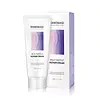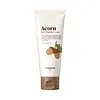What's inside
What's inside
 Key Ingredients
Key Ingredients

 Benefits
Benefits

 Concerns
Concerns

 Ingredients Side-by-side
Ingredients Side-by-side

Arctium Lappa Root Extract
Skin ConditioningCaprylic/Capric Triglyceride
MaskingGlycerin
Humectant1,2-Hexanediol
Skin ConditioningHydrogenated Polydecene
EmollientCaprylyl Methicone
Skin ConditioningVinyldimethicone
Dipropylene Glycol
HumectantCetyl Ethylhexanoate
EmollientCetearyl Alcohol
EmollientNiacinamide
SmoothingSilybum Marianum Seed Extract
Skin ConditioningCetearyl Olivate
Glyceryl Stearate
EmollientSorbitan Olivate
EmulsifyingSqualane
EmollientPanthenol
Skin ConditioningStearic Acid
CleansingAmmonium Acryloyldimethyltaurate/Vp Copolymer
Polyglyceryl-2 Stearate
EmulsifyingHydroxyacetophenone
AntioxidantOctyldodecanol
EmollientStearyl Alcohol
EmollientSodium Polyacryloyldimethyl Taurate
Emulsion StabilisingDimethiconol
EmollientHydrogenated Lecithin
EmulsifyingCaprylyl/Capryl Glucoside
CleansingXanthan Gum
EmulsifyingDisodium EDTA
Echium Plantagineum Seed Oil
Skin ConditioningAdenosine
Skin ConditioningGlyceryl Acrylate/Acrylic Acid Copolymer
HumectantHexylglycerin
HumectantHelianthus Annuus Seed Oil Unsaponifiables
EmollientSodium Hyaluronate
HumectantCardiospermum Halicacabum Flower/Leaf/Vine Extract
Skin ConditioningCopper Tripeptide-1
Skin ConditioningMadecassoside
AntioxidantTocopherol
AntioxidantArctium Lappa Root Extract, Caprylic/Capric Triglyceride, Glycerin, 1,2-Hexanediol, Hydrogenated Polydecene, Caprylyl Methicone, Vinyldimethicone, Dipropylene Glycol, Cetyl Ethylhexanoate, Cetearyl Alcohol, Niacinamide, Silybum Marianum Seed Extract, Cetearyl Olivate, Glyceryl Stearate, Sorbitan Olivate, Squalane, Panthenol, Stearic Acid, Ammonium Acryloyldimethyltaurate/Vp Copolymer, Polyglyceryl-2 Stearate, Hydroxyacetophenone, Octyldodecanol, Stearyl Alcohol, Sodium Polyacryloyldimethyl Taurate, Dimethiconol, Hydrogenated Lecithin, Caprylyl/Capryl Glucoside, Xanthan Gum, Disodium EDTA, Echium Plantagineum Seed Oil, Adenosine, Glyceryl Acrylate/Acrylic Acid Copolymer, Hexylglycerin, Helianthus Annuus Seed Oil Unsaponifiables, Sodium Hyaluronate, Cardiospermum Halicacabum Flower/Leaf/Vine Extract, Copper Tripeptide-1, Madecassoside, Tocopherol
Water
Skin ConditioningQuercus Acutissima Fruit Extract 10%
AstringentButylene Glycol
HumectantGlycerin
HumectantNiacinamide
SmoothingDicaprylyl Ether
EmollientPentylene Glycol
Skin ConditioningHydrogenated Polydecene
EmollientDicaprylyl Carbonate
EmollientVinyldimethicone
Hydroxyethyl Acrylate/Sodium Acryloyldimethyl Taurate Copolymer
Emulsion StabilisingAcrylates/C10-30 Alkyl Acrylate Crosspolymer
Emulsion StabilisingHydroxyacetophenone
Antioxidant1,2-Hexanediol
Skin ConditioningTromethamine
BufferingDimethiconol
EmollientGluconolactone
Skin ConditioningOpuntia Ficus-Indica Stem Extract
Skin ConditioningHamamelis Virginiana Extract
AntiseborrhoeicAdenosine
Skin ConditioningSorbitan Isostearate
EmulsifyingDiospyros Kaki Fruit Extract
Skin ConditioningCamellia Sinensis Leaf Extract
AntimicrobialCastanea Crenata Shell Extract
Skin ConditioningXanthan Gum
EmulsifyingSodium Phytate
Glyceryl Acrylate/Acrylic Acid Copolymer
HumectantBiosaccharide Gum-1
HumectantSodium Hyaluronate
HumectantHydrolyzed Lupine Protein
Skin ConditioningDextrin
AbsorbentTheobroma Cacao Extract
Skin ConditioningEnantia Chlorantha Bark Extract
Skin ConditioningBeta-Glucan
Skin ConditioningEucalyptus Globulus Leaf Oil
PerfumingRosmarinus Officinalis Leaf Oil
MaskingAmyris Balsamifera Bark Oil
MaskingSalvia Officinalis Oil
MaskingPueraria Lobata Root Extract
HumectantUlmus Davidiana Root Extract
Skin ConditioningOenothera Biennis Flower/Leaf/Stem Extract
Skin ConditioningPinus Palustris Leaf Extract
TonicCitrus Aurantium Bergamia Fruit Oil
MaskingEthylhexylglycerin
Skin ConditioningHelianthus Annuus Seed Oil
EmollientPalmitoyl Tripeptide-5
Skin ConditioningTocopherol
AntioxidantSalvia Sclarea Oil
MaskingOleanolic Acid
Skin ConditioningCaprylyl Glycol
EmollientWater, Quercus Acutissima Fruit Extract 10%, Butylene Glycol, Glycerin, Niacinamide, Dicaprylyl Ether, Pentylene Glycol, Hydrogenated Polydecene, Dicaprylyl Carbonate, Vinyldimethicone, Hydroxyethyl Acrylate/Sodium Acryloyldimethyl Taurate Copolymer, Acrylates/C10-30 Alkyl Acrylate Crosspolymer, Hydroxyacetophenone, 1,2-Hexanediol, Tromethamine, Dimethiconol, Gluconolactone, Opuntia Ficus-Indica Stem Extract, Hamamelis Virginiana Extract, Adenosine, Sorbitan Isostearate, Diospyros Kaki Fruit Extract, Camellia Sinensis Leaf Extract, Castanea Crenata Shell Extract, Xanthan Gum, Sodium Phytate, Glyceryl Acrylate/Acrylic Acid Copolymer, Biosaccharide Gum-1, Sodium Hyaluronate, Hydrolyzed Lupine Protein, Dextrin, Theobroma Cacao Extract, Enantia Chlorantha Bark Extract, Beta-Glucan, Eucalyptus Globulus Leaf Oil, Rosmarinus Officinalis Leaf Oil, Amyris Balsamifera Bark Oil, Salvia Officinalis Oil, Pueraria Lobata Root Extract, Ulmus Davidiana Root Extract, Oenothera Biennis Flower/Leaf/Stem Extract, Pinus Palustris Leaf Extract, Citrus Aurantium Bergamia Fruit Oil, Ethylhexylglycerin, Helianthus Annuus Seed Oil, Palmitoyl Tripeptide-5, Tocopherol, Salvia Sclarea Oil, Oleanolic Acid, Caprylyl Glycol
Ingredients Explained
These ingredients are found in both products.
Ingredients higher up in an ingredient list are typically present in a larger amount.
1,2-Hexanediol is a synthetic liquid and another multi-functional powerhouse.
It is a:
- Humectant, drawing moisture into the skin
- Emollient, helping to soften skin
- Solvent, dispersing and stabilizing formulas
- Preservative booster, enhancing the antimicrobial activity of other preservatives
Adenosine is in every living organism. It is one of four components in nucleic acids that helps store our DNA.
Adenosine has many benefits when used. These benefits include hydrating the skin, smoothing skin, and reducing wrinkles. Once applied, adenosine increases collagen production. It also helps with improving firmness and tissue repair.
Studies have found adenosine may also help with wound healing.
In skincare products, Adenosine is usually derived from yeast.
Learn more about AdenosineDimethiconol is a silicone that resembles the popular dimethicone. Like other silicones, it is an emollient. Emollients create a thin film on skin to prevent moisture from escaping.
This ingredient helps to create a silky texture and improve spreadability. Due to its high molecular weight and thickness, it is often combined with cyclopentasiloxane.
Glycerin is already naturally found in your skin. It helps moisturize and protect your skin.
A study from 2016 found glycerin to be more effective as a humectant than AHAs and hyaluronic acid.
As a humectant, it helps the skin stay hydrated by pulling moisture to your skin. The low molecular weight of glycerin allows it to pull moisture into the deeper layers of your skin.
Hydrated skin improves your skin barrier; Your skin barrier helps protect against irritants and bacteria.
Glycerin has also been found to have antimicrobial and antiviral properties. Due to these properties, glycerin is often used in wound and burn treatments.
In cosmetics, glycerin is usually derived from plants such as soybean or palm. However, it can also be sourced from animals, such as tallow or animal fat.
This ingredient is organic, colorless, odorless, and non-toxic.
Glycerin is the name for this ingredient in American English. British English uses Glycerol/Glycerine.
Learn more about GlycerinGlyceryl Acrylate/Acrylic Acid Copolymer is made up of glycerin and polyacrylic acid. It helps hydrate your skin as a humectant.
This ingredient forms a hydrogel that delivers moisturizing, water-based ingredients to the skin. It is also used to thicken a product and to give it a smooth texture.
Acrylic acid itself is toxic, but the polymer form (this ingredient) is too large to penetrate skin, making it non-toxic.
Learn more about Glyceryl Acrylate/Acrylic Acid CopolymerHydrogenated Polydecene is an emollient. It creates a non-occlusive film on the skin that offers extra protection for your skin barrier.
The texture of Hydrogenated Polydecene ranges from light and silky to rich.
Hydrogenated Polydecene is the end compound of controlled hydrogenation of Polydecene.
Learn more about Hydrogenated PolydeceneHydroxyacetophenone is antioxidant with skin conditioning and soothing properties. It also boosts the efficiency of preservatives.
This ingredient is not irritating or sensitizing.
Niacinamide is a multitasking form of vitamin B3 that strengthens the skin barrier, reduces pores and dark spots, regulates oil, and improves signs of aging.
And the best part? It's gentle and well-tolerated by most skin types, including sensitive and reactive skin.
You might have heard of "niacin flush", or the reddening of skin that causes itchiness. Niacinamide has not been found to cause this.
In very rare cases, some individuals may not be able to tolerate niacinamide at all or experience an allergic reaction to it.
If you are experiencing flaking, irritation, and dryness with this ingredient, be sure to double check all your products as this ingredient can be found in all categories of skincare.
When incorporating niacinamide into your routine, look out for concentration amounts. Typically, 5% niacinamide provides benefits such as fading dark spots. However, if you have sensitive skin, it is better to begin with a smaller concentration.
When you apply niacinamide to your skin, your body converts it into nicotinamide adenine dinucleotide (NAD). NAD is an essential coenzyme that is already found in your cells as "fuel" and powers countless biological processes.
In your skin, NAD helps repair cell damage, produce new healthy cells, support collagen production, strengthen the skin barrier, and fight environmental stressors (like UV and pollution).
Our natural NAD levels start to decline with age, leading to slower skin repair, visible aging, and a weaker skin barrier. By providing your skin niacinamide, you're recharging your skin's NAD levels. This leads to stronger, healthier, and younger looking skin.
Another name for vitamin B3 is nicotinamide. This vitamin is water-soluble and our bodies don't store it. We obtain Vitamin B3 from either food or skincare. Meat, fish, wheat, yeast, and leafy greens contain vitamin B3.
The type of niacinamide used in skincare is synthetically created.
Learn more about NiacinamideSodium Hyaluronate is hyaluronic acid's salt form. It is commonly derived from the sodium salt of hyaluronic acid.
Like hyaluronic acid, it is great at holding water and acts as a humectant. This makes it a great skin hydrating ingredient.
Sodium Hyaluronate is naturally occurring in our bodies and is mostly found in eye fluid and joints.
These are some other common types of Hyaluronic Acid:
Learn more about Sodium HyaluronateTocopherol (also known as Vitamin E) is a common antioxidant used to help protect the skin from free-radicals and strengthen the skin barrier. It's also fat soluble - this means our skin is great at absorbing it.
Vitamin E also helps keep your natural skin lipids healthy. Your lipid skin barrier naturally consists of lipids, ceramides, and fatty acids. Vitamin E offers extra protection for your skin’s lipid barrier, keeping your skin healthy and nourished.
Another benefit is a bit of UV protection. Vitamin E helps reduce the damage caused by UVB rays. (It should not replace your sunscreen). Combining it with Vitamin C can decrease sunburned cells and hyperpigmentation after UV exposure.
You might have noticed Vitamin E + C often paired together. This is because it is great at stabilizing Vitamin C. Using the two together helps increase the effectiveness of both ingredients.
There are often claims that Vitamin E can reduce/prevent scarring, but these claims haven't been confirmed by scientific research.
Learn more about TocopherolVinyldimethicone is a type of silicone.
Xanthan gum is used as a stabilizer and thickener within cosmetic products. It helps give products a sticky, thick feeling - preventing them from being too runny.
On the technical side of things, xanthan gum is a polysaccharide - a combination consisting of multiple sugar molecules bonded together.
Xanthan gum is a pretty common and great ingredient. It is a natural, non-toxic, non-irritating ingredient that is also commonly used in food products.
Learn more about Xanthan Gum